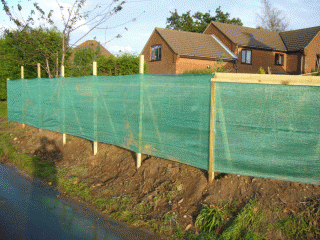The Laurel Hedge Must GO!

The hedge is approximately ten feet tall, and provides an essential windbreak for the garden (particularly from the bitter northerly winds that blow across the fields). We therefore don't want to replace the whole hedge all at once, but in stages over several years.
Our local garden centre recommends a variety of plants, such as: hawthorn; blackhorn; field maple. Dogrose makes an ideal occasional extra too. We don't want to be planting these until late October (in soil) or mid-November (bare roots) when they have cleared the growing season. There is around 52 feet (16.5m) of hedgerow, and at a spacing of five plants per metre we will need around 82 plants.
A relative of ours makes these suggestions:
- I wouldn't go for hawthorne - a pig to cut because of the thorns
- If you want a good native hedge go for a mixture of dogwood, beech, and hornbeam (cheaper and more hardy than beech - both hold their leaves in winter so you get colour and more breaking of the wind).
- You can get barerooted ones in the winter which are much cheaper and take better.
- If I were you I would take out all the laurel - buy some windbreak netting and get the new ones planted, and within a year or two they will be pretty well grown. The windbreak net will protect them and you in the meantime
- Don't bother with those green protector sleeves.
- Plant a few more than you think you need - some are bound to die and you can always thin them out later if needed.
- Shouldn't cost much because it isn't a big stretch.
October Update: The Big Dig We initially thought that we should remove every other laurel plant, let the new hedging fill the gap over a period of a couple of years, then remove the rest of the laurel. Having sawn off half of the plants just above ground level, we then took our cousin's advice and opted for the complete removal/windbreak approach. All of the laurel was to come out and we would erect a windbreak barrier. As soon as we started digging to remove the roots, we realised two things:
- It takes a lot of digging to remove most of the root, and this completely upsets the surrounding ground. If we had left every other laurel bush in, the new hedging would have been greatly unsettled when it came to removing them.
- It is a lot easier to remove a bush if you haven't sawn off the above-ground part! Loosen the soil around the roots, heave the bush around, and it rips out relatively easily.

